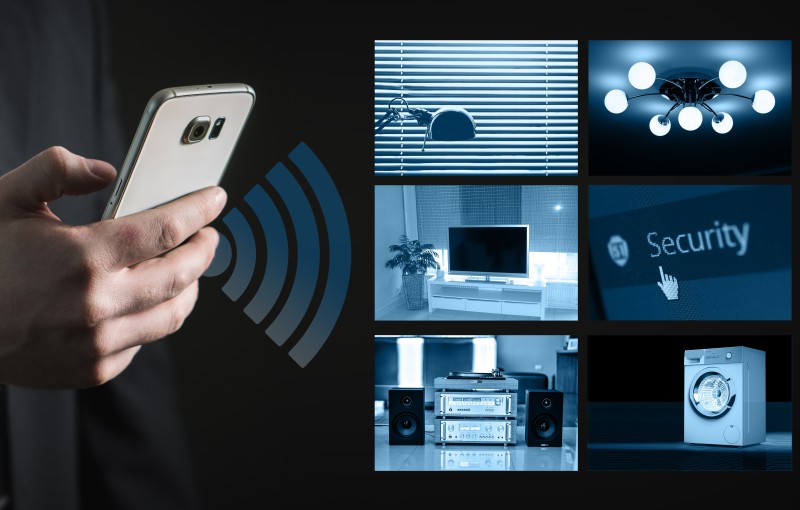Setting up a wireless home network sounds like the easiest thing in the world. You simply install a wireless router and the job is done, while choosing a multi-character password is probably the only thing you do to protect your digital security.

While this is a common situation with almost every Wi-Fi network connection worldwide, the fact remains that you need to be more careful about it. After all, numerous reports claim that all Wi-Fi connections are vulnerable to hacker attacks.
It’s much better to be safe than sorry, so you definitely need to think about the ways to maximize cybersecurity. Keep reading to learn the top 11 wireless home network security tips.
1. Change Network Name
Each wireless home network comes with a default name (called the SSID). We advise you to change the SSID name immediately because it can keep potential hackers away.
Technically speaking, it’s not real protection because a name itself doesn’t improve security. However, hackers tend to attack networks with default names because it shows that users are not taking care of cybersecurity.
2. Change default usernames and passwords
An average wireless network will come with a predetermined username and password on its WiFi router. As you’ve probably guessed already, this is not a good thing if you want to stay safe and sound. A lot of passwords are simple and well-known to digital predators, so it’s necessary to change every default username and password that may come with your devices.
3. Activate Network Encryption
A wireless home network gives you the possibility to activate encryption protocols such as WPA2. This protocol is built to protect a network by scrambling information sent through Wi-Fi, which makes the job much more difficult for hackers. WPA2 is compatible with almost all wireless networks and it will definitely serve as a valuable protection shield.
4. Disable SSID Broadcast
Wireless networks are based on a network name known as the Service Set Identifier (SSID) as we’ve mentioned also above. A Wi-Fi router regularly broadcasts SSID to help mobile users connect with hotspots. However, this feature is not necessary for home networks because it is fixed, while it gives hackers a chance to try to break in. That’s why you should manually disable SSID broadcast.
5. Disable Remote Access
A vast majority of Wi-Fi routers enable users to access a wireless home network from remote devices. That way, a hacker can mess with your privacy settings and steal your personal information. But if you disable remote access, no one will be able to join the network from a device not located in your house.
6. Use a Hardware Firewall
Gregory Dyson, a cybersecurity expert at Essay Pro, says most people know that software firewalls protect their computer systems, but they don’t know anything about physical firewalls that protect Wi-Fi routers: “The truth is that top-level routers usually have their own native firewalls installed to maintain the highest level of network protection. But even if you don’t have a built-in firewall, you can find and install one rather quickly.”
7. Keep software up to date
Software represents a critical segment of your wireless home network, but it can be subject to malware attacks just like any other software. When you keep software up to date and upgrade it regularly, you basically eliminate all those small flaws and imperfections that make the system vulnerable to cyber attacks.
For example, if your windows operating system or web browser are not patched with latest security software updates, by browsing through a malicious website you can get compromised by a “drive-by” attack which takes advantage of vulnerabilities in your software, thus compromising your computer.
8. Position a Router Strategically
Wi-Fi networks and especially newer wireless mesh systems, usually have a bit longer range than necessary, so nearby users can connect as well.
There is a simple way to prevent this possible problem: position a router strategically in your house. How come? Well, you can just place it somewhere in the middle of the house and avoid positions next to the walls. That way, the external range of your network will be very limited.
9. Disable Auto-Connect Option
This tip goes hand in hand with the previous one. Namely, your neighbors might have their own wireless systems, so you shouldn’t put yourself in a position to connect automatically. Therefore, make sure to disable the auto-connect option. This is not the biggest threat in the Wi-Fi universe, but don’t leave anything to chance.
10. Turn off the Network When Absent
This is yet another highly practical suggestion. You should turn off the wireless home network if you are away and don’t plan to use it for a while. Doing so, you will prevent neighbor user attacks, but you will also enable surge protection.
There are some routers, like the D-Link DIR 882 that have a schedule feature which allows the router to automatically switch off the WiFi at certain times of the day (e.g from midnight up to 7:00am).
11. Protect Devices Using the Network
The last advice on our list is to protect all devices using the wireless home network. This means using firewalls, doing frequent system updates, and completing all other activities that can make the network and the corresponding components safer.
Conclusion
Installing a wireless home network is certainly a routine task, but it doesn’t mean you should neglect various cybersecurity threats that come along with it. That’s why you need to understand how to protect your digital self from possible cyber attacks. We showed you the most practical wireless home network safety tips, so make sure to use them and maximize your online security.
Leave a Reply